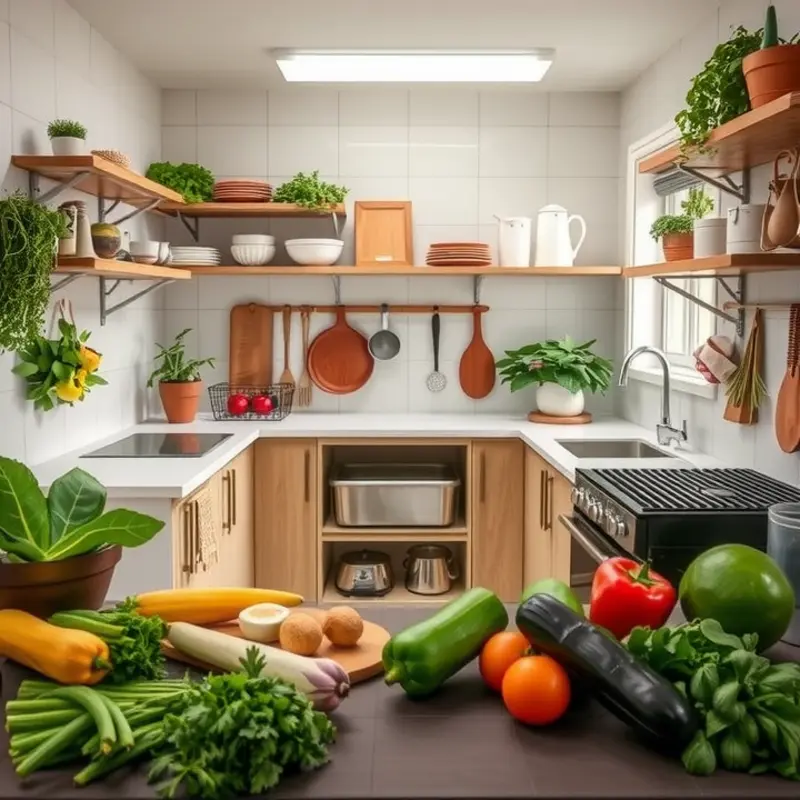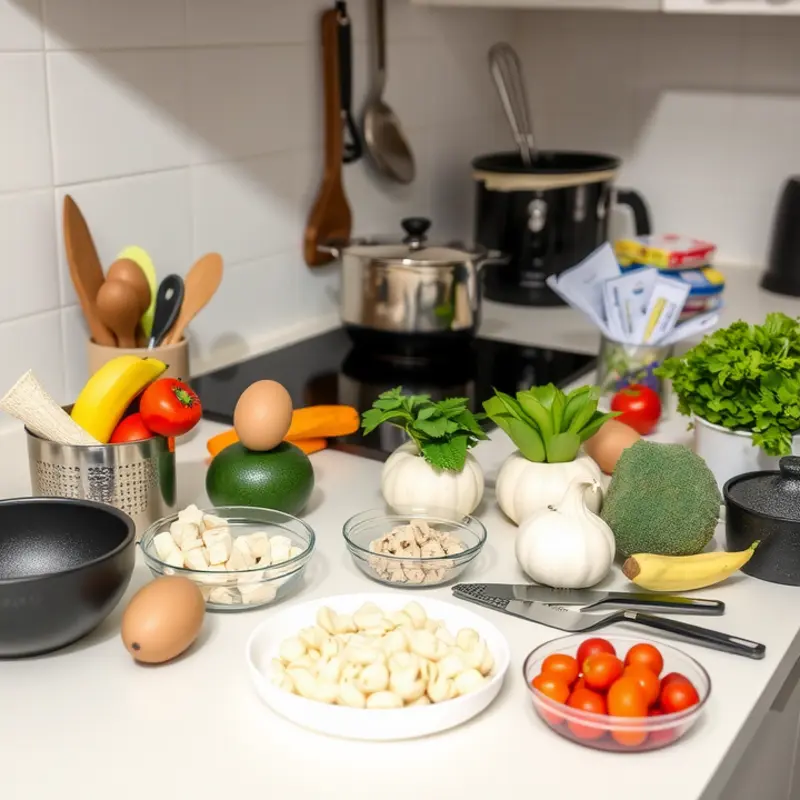Streamlining your kitchen workflow can make cooking at home an enjoyable and efficient experience, no matter your skill level. By organizing your space and honing your techniques, you can reduce stress, minimize cleanup, and enhance the joy of cooking. With practical tips and easy-to-follow steps, anyone can elevate their kitchen skills for delicious results. Let’s turn your kitchen into a well-oiled machine.
Creating Your Kitchen Command Center

Designing an efficient kitchen begins with maximizing the space you have, no matter its size. The cornerstone of this process is establishing a layout that supports fluid movement and straightforward access to essential tools and ingredients. The goal is to minimize unnecessary steps and streamline your cooking routine.
Start by decluttering your kitchen. This means evaluating which items you truly need and use, and which can be stored elsewhere or donated. A clutter-free kitchen not only makes navigation easier but also enhances your focus while cooking. Think about Marie Kondo’s principle—keep only what brings joy or serves a practical purpose.
Next, establish distinct zones for preparation, cooking, and cleaning. This zoning approach helps you organize tasks and minimize chaos. In the prep zone, place cutting boards, knives, and mixing bowls at the forefront. This area should be spacious enough to handle ingredient storage before they hit the stove or oven.
For the cooking zone, proximity to the stove or oven is key. Arrange pots, pans, and utensils within arm’s reach, ensuring that everything you need for cooking is accessible in one fluid motion. Installing an overhead rack can be an excellent solution for storing frequently used items while freeing up counter space.
The cleaning zone should be designed to make post-meal cleanup as efficient as possible. Here, having your sink, dishwasher, and waste disposal properly aligned will reduce the time you spend cleaning up. Group your cleaning supplies in this zone for quick access.
Organize your pantry and fridge with efficiency in mind. Shelves should be curated so that frequently used items are at eye level or easy to reach. Consider labeling containers to quickly identify contents, thereby reducing the hunt during meal prep. To maintain freshness and reduce waste, check out safer storage of sauces which provides insights on efficient food storage.
Moreover, implementing vertical storage solutions can increase your kitchen’s capacity without crowding. Magnetic strips for knives or metal shelves can keep counters tidy. Utilize cabinet doors by installing hooks or baskets for smaller items. The back of the pantry door can serve as additional storage with the help of mounted organizers.
Develop a habit of returning items to their designated zones. This routine ensures that the next time you dive into a recipe, your kitchen is ready for action without the impediments of misplaced tools or ingredients.
Ultimately, crafting your kitchen command center is about making the space work for you. With a well-designed layout and thoughtful organization, cooking transforms from a chore into an experience, allowing you to focus on creativity and enjoyment in the kitchen.
Mastering Prep to Save Time

In the quest for kitchen efficiency, mastering the art of preparation can significantly cut down cooking time and reduce stress. One key technique is mise en place, a French phrase meaning ‘everything in its place.’ This involves organizing and arranging all ingredients before turning on the stove. By having everything prepped and ready, you set yourself up for a seamless cooking experience, minimizing the usual chaos.
Begin your prep by reading through the recipe entirely. Identify the tools and ingredients you will need. Gather your kitchen gadgets, measuring spoons, and bowls. Arrange ingredients in the order you’ll use them, like spices and herbs that are often added in quick succession. Chopping vegetables in advance, marinating proteins overnight, or measuring dry ingredients beforehand can all save valuable time during the actual cooking process.
Batch cooking is another invaluable method for mastering kitchen efficiency. Set aside an afternoon to prepare larger quantities of base ingredients like grains, beans, or vegetables. Store these in labeled containers for easy access during the week. This technique not only saves time but also encourages healthier eating by providing convenient, homemade options.
For more on effective meal prep strategies, explore techniques like practical ingredient batching. This resource offers insights into categorizing and scheduling your prep to avoid feeling overwhelmed.
A strategic meal plan is essential. Start by planning a weekly menu that accommodates fresh produce, balancing it with what’s already in your pantry. Create shopping lists based on this plan to ensure you have all necessary ingredients.
Lastly, efficient food storage cannot be overlooked. Properly storing prepped ingredients maximizes their shelf life and flavor. Invest in airtight containers or simple glass jars that allow you to quickly spot what’s inside. Label each container with the content and date of preparation, reducing the chances of overlooking ingredients.
By implementing these strategies, you transform your cooking workflow into an organized and stress-free experience. Adopting mise en place and batch cooking leads to more intentional kitchen practices, aligning perfectly with a well-prepped environment.
Final words
Enhancing your kitchen workflow revolves around organization and effective techniques. By establishing a systematic approach, from designing your kitchen layout to mastering meal prep, you can make cooking a pleasure rather than a chore. Remember, every home cook can improve their skills with a little mindfulness and practice. Regularly evaluate your process, adapt new methods, and embrace the joy of home cooking!







